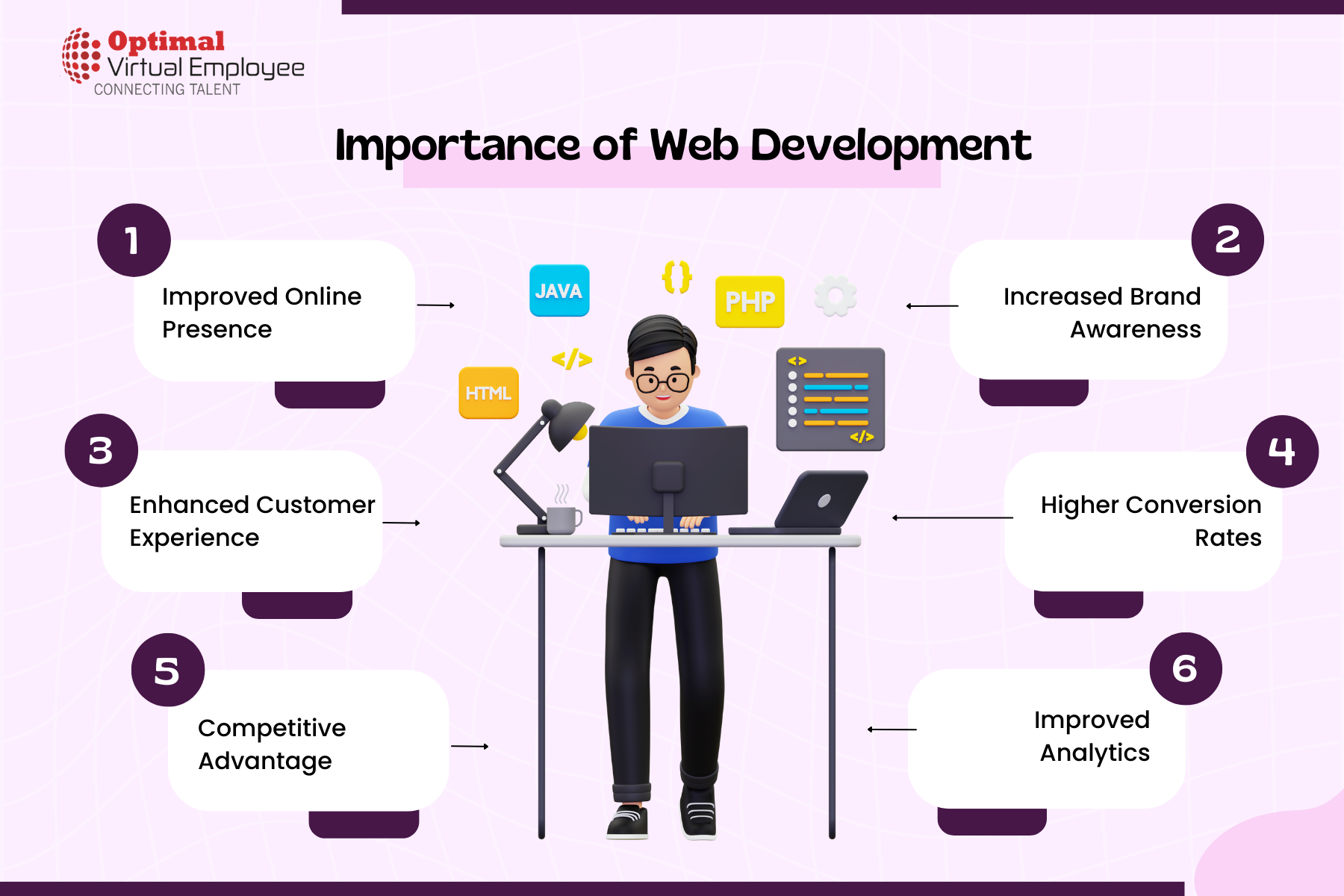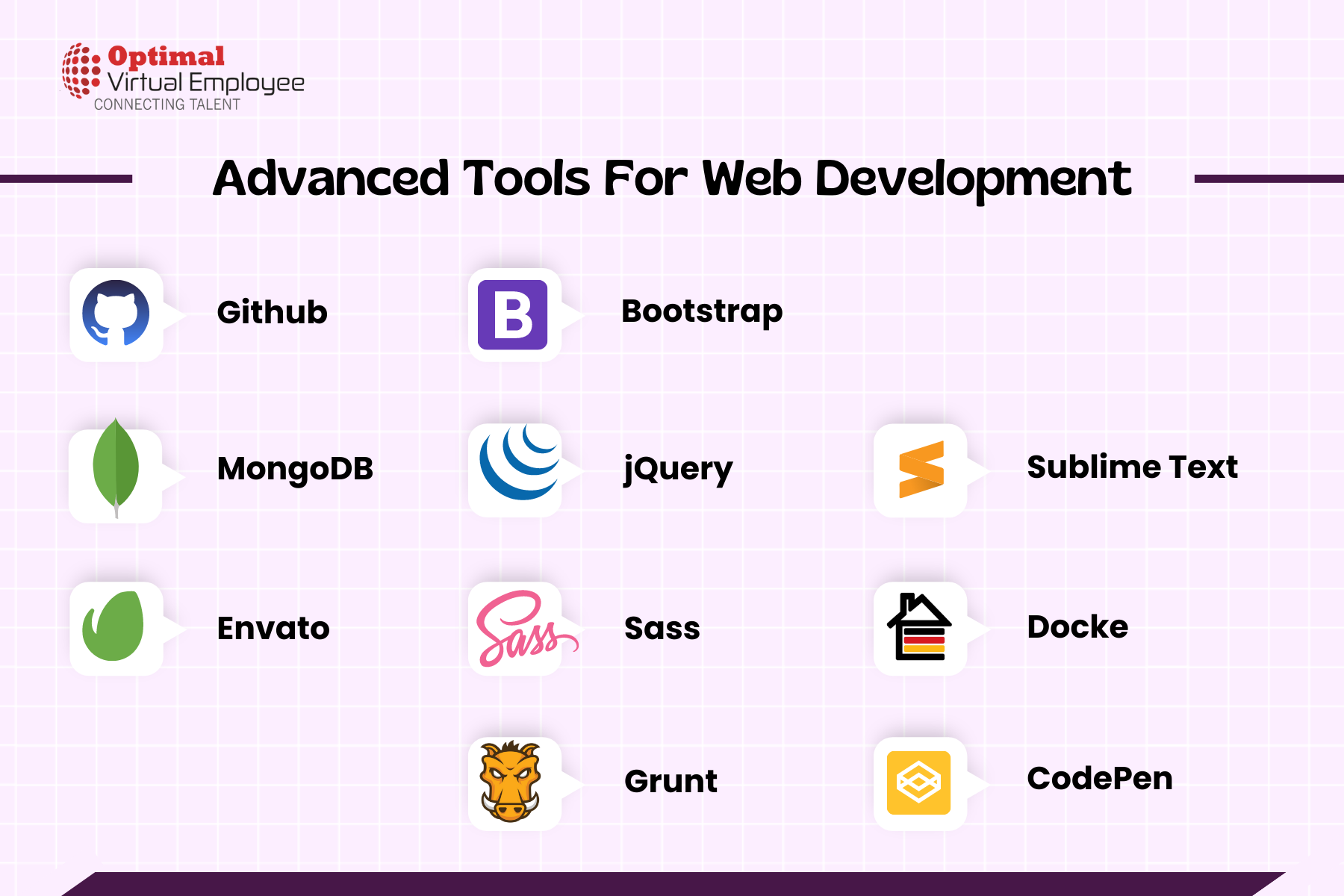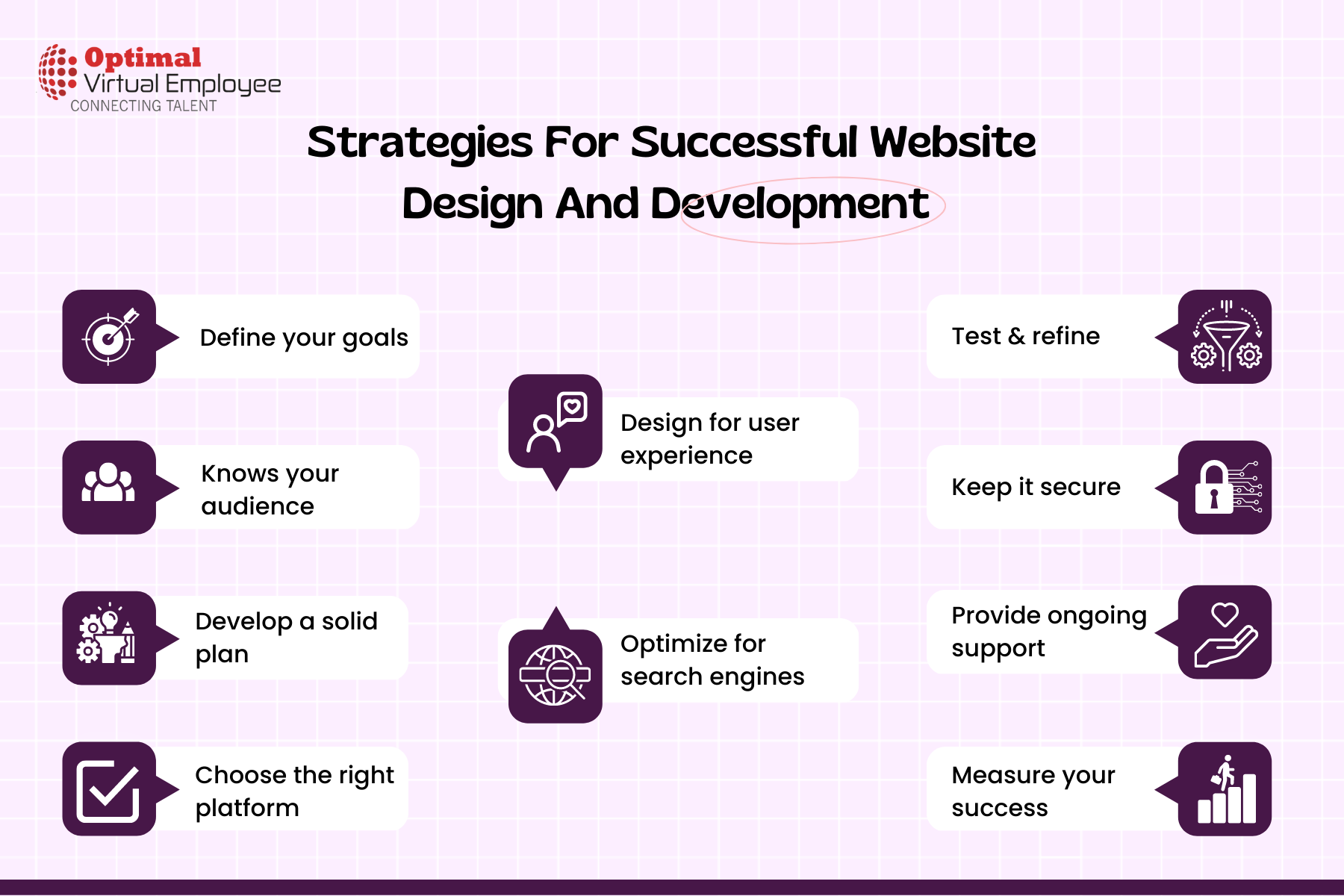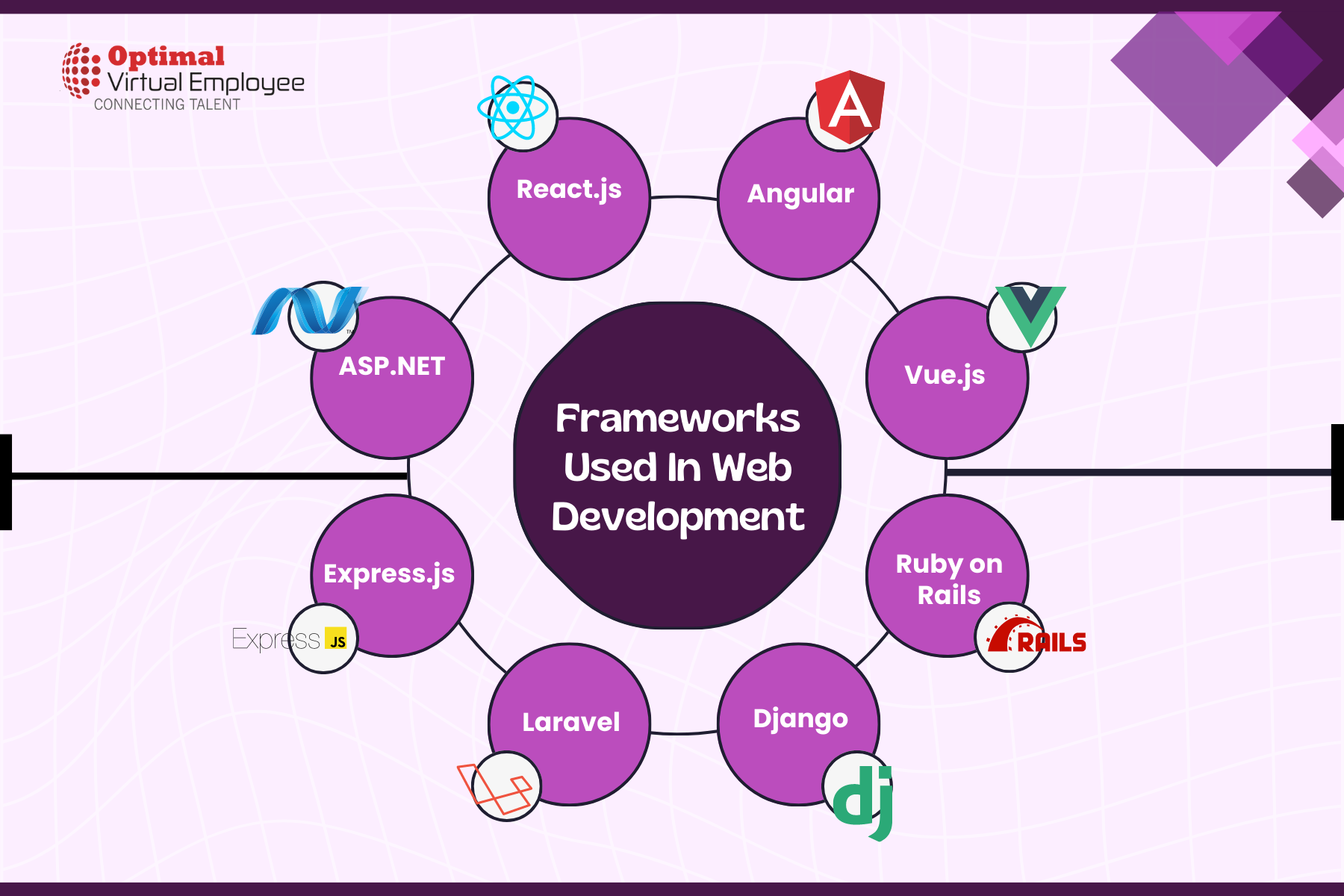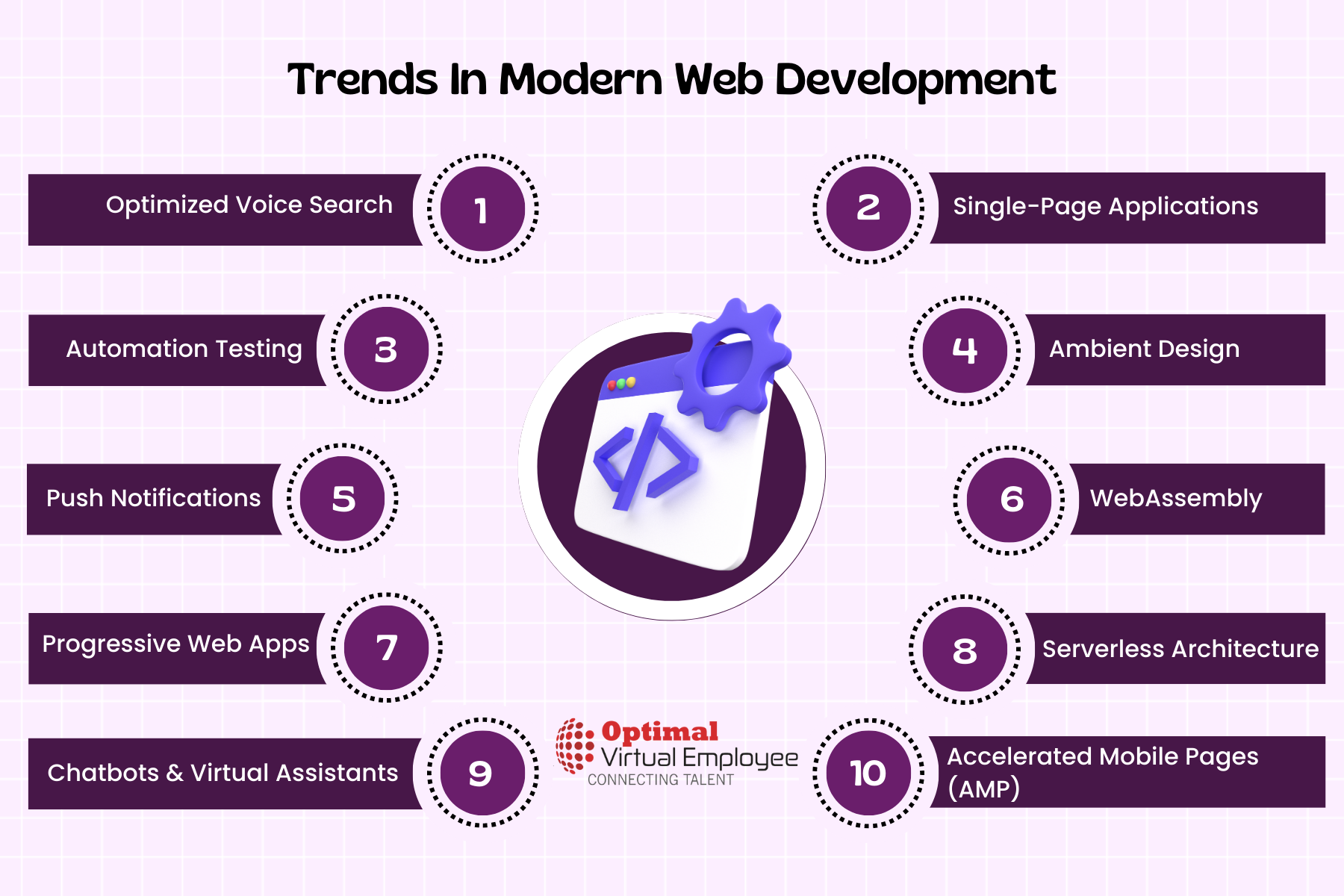We surveyed 132+ businesses, and the results will blow your mind!!
53% of mobile users said they abandon a website if it takes more than three seconds to load.
In today’s digital age, where technology reigns supreme and the online realm has become the battleground for business supremacy, the role of web development has transcended mere aesthetics and functionality.
It has become the lifeblood of success, the driving force behind customer engagement, and the key to unlocking new opportunities. For CXOs standing at the helm of their organizations, understanding the criticality of web development has become a non-negotiable imperative in their pursuit of sustainable growth and competitive advantage.
In the ever-expanding digital landscape, where the internet serves as the gateway to global markets and customer reach knows no boundaries, web development has emerged as the bridge between businesses and their target audiences.
CXOs, as the vanguards of their organization’s strategic direction, must recognize the pivotal role that a robust web presence plays in shaping brand perception, fostering customer loyalty, and fueling business success.
The importance of web development for businesses cannot be overstated. According to a recent survey by Clutch, 46% of small businesses in the US still do not have a website. This means that these businesses are missing out on potential customers who are searching for their products or services online.
Additionally, 94% of consumers say that a well-designed website is more likely to engage them.
Web development paves the way for digital transformation, enabling businesses to expand their horizons, tap into new markets, and diversify revenue streams.
From embracing e-commerce platforms to integrating seamless payment gateways, web development empowers CXOs to break down geographical barriers, reach untapped audiences, and unlock untold growth potential.
Web development is also critical for businesses that want to stay ahead of the competition. A well-designed and optimized website can improve a business’s search engine rankings, increasing visibility and traffic.
Web development is critical to the success of businesses in the digital age. A well-designed and optimized website can improve a business’s online visibility, engage customers, and increase traffic and sales.
Without proper web development, businesses may miss out on potential customers and fall behind competitors.
The Importance Of Web Development In The Digital Age To Business Success
The digital age has significantly shifted how businesses operate, interact with customers, and market their products and services. In today’s world, a company’s online presence plays a crucial role in its success. And web development is an essential aspect of creating and maintaining that online presence.
Let’s discuss the importance of web development in the digital age to business success and provide some statistics to back it up.
Your website is your first impression.
In the digital age, your website is often the first impression potential customers have of your business. A well-designed and functional website can establish credibility and trust, whereas a poorly designed website can harm your reputation.
According to a survey conducted by Stanford, 75% of people judge a company’s credibility based on the design of its website.
Your website is accessible 24/7.
Unlike a physical store or office, your website is accessible to customers 24/7. It is the most cost-effective way to market your business and reach a global audience.
According to a survey conducted by the Pew Research Center, 81% of Americans are online every day, and 28% are online “almost constantly.”
Your website can generate leads and increase sales.
A well-designed website can generate leads and increase sales. According to a survey conducted by Econsultancy, 44% of website visitors will leave a company’s website if there is no contact information or phone number.
In contrast, 51% of people who contact a business through its website end up becoming customers.
Your website can improve customer engagement.
Your website can also improve customer engagement. By providing valuable information, interactive features, and a user-friendly experience, your website can keep visitors on your site longer and increase their engagement with your brand.
According to a survey conducted by Kissmetrics, a one-second delay in website loading time can lead to a 7% reduction in customer engagement.
Your website can enhance your brand.
Your website can also enhance your brand. Using consistent branding, high-quality visuals, and engaging content, your website can communicate your brand’s values and personality to your target audience.
According to a survey conducted by Forbes, consistent branding across all channels can increase revenue by up to 23%.
Your website can provide valuable data.
Your website can provide valuable customer data, such as demographics, browsing behaviour, and preferences. By analyzing this data, you can gain insights into your target audience and tailor your marketing strategies accordingly.
According to a survey conducted by HubSpot, companies that use marketing automation to nurture prospects see a 451% increase in qualified leads.
Your website can improve your SEO.
Your website can also improve your search engine optimization (SEO). You can increase your website’s visibility on search engines like Google by using relevant keywords, meta descriptions, and alt tags.
According to a survey conducted by BrightEdge, organic search is the largest source of website traffic, accounting for 53% of website traffic.
Web development is crucial to creating and maintaining an online presence in the digital age. Your website is often the first impression potential customers have of your business, and it can generate leads, increase sales, improve customer engagement, enhance your brand, provide valuable data, and improve your SEO.
According to a survey by Clutch, 46% of small businesses do not have a website, which means there is a significant opportunity for those that do. In today’s world, a well-designed and functional website can give your business a competitive advantage and increase your chances of success.
How Does Web Development Benefit Businesses?
Web development has become an essential aspect of running a successful business in today’s digital world. With the rise of e-commerce and the increasing importance of online presence, web development has become an indispensable tool for businesses of all sizes.
Increased Visibility and Reach
Having a website for your business means you can reach a global audience. According to recent data, there are over 4.9 billion active Internet users worldwide. This number is projected to grow to 5.3 billion by 2024. With a website, your business can reach a massive audience and attract new customers worldwide.
Improved Credibility
In today’s digital age, having a website is a mark of credibility and professionalism. According to a survey conducted by Verisign, 84% of consumers believe that a business with a website is more credible than one without. Having a website also makes it easier for potential customers to research your business and learn more about your products and services.
Increased Sales
A website can be an effective sales tool for your business. With an e-commerce website, you can sell your products and services online 24/7, generating sales even when your physical store is closed. According to a study by Statista, global e-commerce sales are expected to reach $6.5 trillion by 2023, up from $3.5 trillion in 2019.
Better Customer Service
A website can also improve your customer service. By providing a customer support portal on your website, you can help customers get answers to their questions and resolve issues more quickly. This can lead to higher customer satisfaction and increased loyalty.
Cost-Effective Marketing
Web development can also be a cost-effective marketing tool for your business. Optimizing your website for search engines can attract more organic traffic, increasing sales and revenue. According to a study by HubSpot, companies that blog receive 97% more links to their website than those that do not blog.
Improved Analytics and Data Collection
Web development also provides valuable insights into your customers’ behavior and preferences. You can learn more about your customers’ demographics, search preferences, and buying habits by tracking website analytics. This information can help you make more informed business decisions and improve your marketing strategies.
Increased Mobile Responsiveness
With the rise of mobile devices, it’s essential for businesses to have a mobile-friendly website. According to a study by Google, 61% of users are unlikely to return to a mobile site they had trouble accessing, and 40% will visit a competitor’s site instead. Optimizing your website for mobile devices ensures that your customers have a positive experience and are more likely to return.
Competitive Advantage
Finally, web development can give your business a competitive advantage. With a well-designed website, you can differentiate yourself from your competitors and attract more customers.
According to a survey by Clutch, 46% of small businesses do not have a website, which means having one can give you a significant edge.
Web development can bring numerous benefits to businesses, from increased visibility and credibility to improved customer service and sales.
By investing in web development, businesses can stay competitive and succeed in today’s digital world.
Advanced Tools For Web Development
Web development has come a long way since its inception in the early 1990s. Back then, HTML was the only tool available for creating websites, but today, the list of tools and technologies for web development is endless. Advanced tools for web development have emerged to help web developers create more robust and sophisticated websites.
Let’s explore some of the advanced tools available for web development and how they can be used to create high-quality websites.
Git
Git is a version control system that allows developers to keep track of changes made to their code over time. It is a powerful tool that can be used to manage code repositories, collaborate with other developers, and deploy code to production environments.
Git is widely used in web development and is a critical tool for managing the source code of web applications.
Grunt
Grunt is a JavaScript task runner that automates repetitive tasks in web development. It is a powerful tool that can be used to automate tasks such as minification, concatenation, and compilation of CSS and JavaScript files.
Grunt can also be used to optimize images, run tests, and deploy code to production environments.
Gulp
Gulp is another JavaScript task runner that can be used to automate tasks in web development. It is similar to Grunt but uses a streaming approach to improve performance.
Gulp can be used to automate tasks such as image optimization, code minification, and compilation of Sass files.
Webpack
Webpack is a module bundler that can be used to bundle JavaScript files, CSS files, and other assets into a single file. It is a powerful tool that can optimize the loading time of web pages by reducing the number of requests made by the browser.
Webpack can also transpile code, optimize images, and minify code.
Babel
Babel is a JavaScript compiler that can be used to convert modern JavaScript code into a version compatible with older browsers.
It is a powerful tool that allows web developers to write code using modern JavaScript features while maintaining backward compatibility with older browsers. Babel can also be used to transpile other languages such as TypeScript and JSX.
React
React is a JavaScript library for building user interfaces. It is a powerful tool that can be used to create complex web applications with ease.
React uses a declarative syntax to describe the user interface, which makes it easy to reason about and maintain. React can also be used with libraries and frameworks like Redux and Next.js.
Vue.js
Vue.js is another JavaScript library for building user interfaces. It is similar to React but uses a template-based syntax instead of a declarative one.
Vue.js is a lightweight library that is easy to learn and use. It can also be used with libraries and frameworks like Vuex and Nuxt.js.
Angular
Angular is a JavaScript framework for building web applications. It is a powerful tool that can be used to create large-scale web applications with ease.
Angular uses a component-based architecture that makes building reusable and maintainable code easy. Angular also has built-in features such as routing, HTTP requests, and form handling.
Node.js
Node.js is a JavaScript runtime that allows developers to run JavaScript code on the server side. It is a powerful tool that can be used to build scalable and high-performance web applications.
Node.js has a built-in module system, making writing modular and reusable code easy. It can also be used with other libraries and frameworks like Express and Socket.io.
Docker
Docker is a containerization platform that allows developers to package and deploy their applications in a lightweight, portable container. Containers are similar to virtual machines but are much smaller and faster to start up.
Docker allows developers to create a container image that contains all the dependencies and libraries needed to run the application.
Strategies For Successful Website Design And Development
In today’s digital age, having a website has become an essential part of any business. A well-designed and developed website can be a powerful tool to attract and retain customers, promote products or services, and increase brand awareness. However, creating a successful website requires careful planning, creativity, and technical expertise.
Some essential strategies for successful website design and development.
Define your goals and target audience.
The first step in designing a successful website is clearly defining your goals and target audience. What do you want your website to achieve? Are you looking to increase sales, generate leads, or build brand awareness? Who is your target audience, and what are their needs and preferences?
Once you have a clear understanding of your goals and target audience, you can design a website that meets their needs and expectations.
Develop a user-friendly interface.
A user-friendly interface is critical to the success of any website. Your website should be easy to navigate, and visitors should be able to find what they are looking for quickly and easily.
Use clear and concise language, and avoid cluttering the page with too much information or distracting elements. A clean and simple design can often be more effective than a complex and cluttered one.
Ensure compatibility across different devices.
In today’s world, people access the internet using a variety of devices, including desktops, laptops, tablets, and smartphones. It is essential to ensure that your website is compatible with all these devices, looks good, and functions well on each one.
Responsive design, which automatically adjusts the website’s layout based on the device’s screen size, effectively ensures compatibility.
Focus on search engine optimization (SEO)
Search engine optimization (SEO) is optimizing your website to rank higher in search engine results pages (SERPs). A higher ranking can lead to increased visibility and traffic to your website.
To optimize your website for SEO, focus on using relevant keywords, creating high-quality content, and ensuring that your website is easy for search engines to crawl and index.
Use high-quality images and graphics.
High-quality images and graphics can make your website more visually appealing and engaging. Use high-resolution images that are relevant to your content and are optimized for web use.
Avoid using stock images or low-quality graphics, as these can make your website look unprofessional and may turn off visitors.
Ensure fast loading times.
Visitors to your website will quickly become frustrated if it takes too long to load. Slow loading times can also negatively affect your search engine ranking.
To ensure fast loading times, optimize your images, minify your CSS and JavaScript files, and use a content delivery network (CDN) to distribute your content across multiple servers.
Incorporate social media
Social media is an important tool for promoting your website and building brand awareness. Incorporate social media icons and links into your website, and encourage visitors to share your content on their social media accounts.
This can help increase your website’s visibility and drive traffic.
Test and refine your website
Once your website is live, it is important to continuously test and refine it to ensure that it meets your goals and the needs of your target audience.
Use analytics tools to track visitor behaviour and identify areas for improvement. Make changes to your website based on this data, and continue to test and refine your site over time.
Designing and developing a successful website requires careful planning, creativity, and technical expertise. By following these essential strategies, you can create a website that meets the needs of your target audience, promotes your brand, and achieves your business goals.
Frameworks Used In Web Development
Various frameworks can be used in web development. Here are some of the most popular ones:
These frameworks provide developers with pre-built modules, tools, and libraries to simplify the development process and improve productivity. They also provide an organized structure to the codebase and improve the performance and scalability of the web application.
Trends In Modern Web Development
Modern web development has undergone significant changes in recent years, thanks to the emergence of new technologies and the evolution of existing ones. As a result, the latest web development trends focus on enhancing the user experience, improving the performance and security of web applications, and making the development process more efficient.
Progressive Web Apps (PWAs): PWAs are web applications that offer a native app-like experience, including offline capabilities, push notifications, and smooth performance. They are becoming more popular because they can provide a better user experience and are easier to develop and maintain than native apps.
Voice search and AI integration: With the increasing popularity of virtual assistants like Siri and Alexa, voice search is becoming more prevalent. Developers are integrating AI and natural language processing (NLP) capabilities into websites to make them more interactive and user-friendly.
Motion UI: Motion UI involves animations, transitions, and other visual effects to create a more dynamic and engaging user experience. It can help to guide users through the website and draw attention to critical elements.
Static site generators: Static site generators are becoming more popular because they can help to speed up the development process and improve website performance. They generate HTML, CSS, and JavaScript files that can be served directly to the browser, reducing server load and improving site speed.
Low-code development: Low-code development tools allow developers to create web applications with minimal coding. This can help to speed up the development process, reduce errors, and make it easier for non-technical users to contribute to the development process.
Cybersecurity: With the increasing threat of cyber attacks, cybersecurity is becoming a critical concern for web developers. Developers are incorporating security measures into their applications to protect user data and prevent unauthorized access.
Single-page applications (SPAs): SPAs are web applications that load all necessary resources on a single page, making them faster and more responsive. They are becoming more popular because they can provide a better user experience and are easier to develop than traditional multi-page applications.
Accessibility: Developers are starting to prioritize accessibility by making websites that are easier to use for people with disabilities. This involves incorporating features such as text-to-speech, screen readers, and alternative text for images.
Overall, web development constantly evolves, and new trends and technologies will likely emerge in the coming years.
Conclusion
In a nutshell, web development has become critical to business success in the digital age due to the increasing importance of online presence and customer engagement. The internet has drastically changed how consumers interact with businesses, making a website a “necessary tool” for any company to stay competitive.
Statistics support the importance of web development in business success. According to a survey by Clutch, 46% of small businesses do not have a website, which means they are missing out on potential customers who use the internet to research products and services before purchasing.
In addition, a study by Google found that 50% of mobile users are more likely to visit a store if they find it through a mobile search, indicating the importance of having a mobile-friendly website.
Web development can also improve customer engagement and brand loyalty. A survey by Salesforce found that 80% of customers believe that a company’s experience is as important as its products or services.
A well-designed website with user-friendly features can provide a positive experience for customers and increase their likelihood of returning to the site and doing business with the company.
Furthermore, web development can increase a company’s revenue. According to a report by Adobe, businesses with the best online experiences saw a 10% increase in revenue compared to those with poor online experiences. Additionally, a study by Clutch found that 75% of consumers judge a company’s credibility based on its website design.
With the importance of online presence only continuing to grow, investing in web development is essential for businesses to remain competitive and succeed in the digital age.


